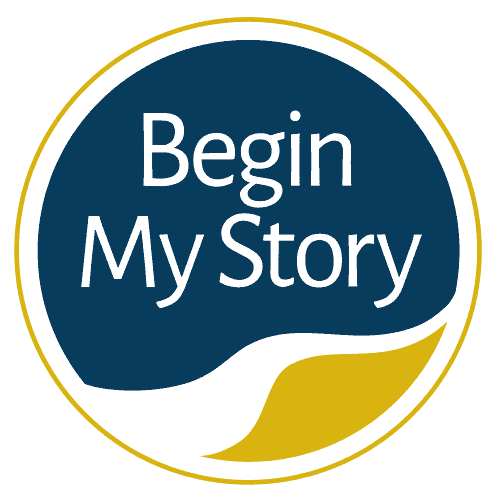
Learn an effective 8-step strategy for tracing ancestors in genealogical and historical libraries and societies.
Over many generations, the history of a family lies buried in different sources and places. Like a good detective, the historian and genealogist must search for the pieces of a family’s past in those many sources such as books, documents, and manuscripts. You must be must also be patient and imaginative, for the search can take years and involve a string of clues that lead to new sources. The facts–names, dates, events–that a genealogist gathers through the years are like pieces of a puzzle. Gradually those pieces can be fitted together to make a picture of a family, its many members, and its unique history.
For many researchers and genealogists, historical societies and university and state libraries are a vast reservoir of information, tools, and experts that will enhance and magnify your research by leaps and bounds. Use the information to build individual and family profiles and write narratives about ancestors.
libraries and societies collect books, manuscripts, reference files, maps, newspapers, photographs, and other historical value items. The following outlines steps you might consider to unlock and find your family’s history and genealogy.
Table of Contents
ToggleStep 1. Consult Handbooks on Genealogical Research
Handbooks on genealogical research offer both beginning and advanced researchers instruction, advice, and helpful information. Topics covered by these books include getting started, types of records to consult, research in other states and foreign countries, and record keeping. Those reference books focused on research in the locale of your interest are of particular value. Look under the headings such as “Genealogy-Handbooks, Manuals, etc.”
Step 2. Check Genealogy Surname Card Files
This physical and online card file is arranged alphabetically by surname and references births, baptisms, marriages, and deaths. These cards were compiled from newspapers printed before 1850, books, journals, church records, and other sources.
Step 3. Search Family History Files and Published Biographies and Genealogies
The Family History Files contain unpublished notes and charts on lineages specific to the state, region, local and compiled by other researchers.
Published genealogies are part of the Library’s book collection and are listed by author, title, and family name in the book catalog. Books giving information on more than one family are cross-referenced under all the essential surnames.
Biographical encyclopedias, often published during the nineteenth century to flatter prominent business people and politicians, contain valuable genealogical information.
Step 4. Check Books on State and Local History
A wealth of genealogical information is contained in state and local history books.
Step 5. Search Journals and Periodicals
Often bits and pieces of family history can be found in articles in historical and genealogical journals. A name index often appears at the end of each volume. These are inbound volumes on the library shelves, sometimes microfilmed and online.
Step 6. Search Original Source Material
Collections include books, manuscripts, reference files, maps, newspapers, and photographs on all aspects of history and people. Not all of their collections are indexed or reproduced online, and contact them for research assistance if you don’t find what you are looking for. A detailed overview of the type of source material you can expect to find in your discovery of societies and libraries follows.
A Few Definitions. As you begin working with societies and libraries, you will hear vocabulary used to discuss and describe the type of material you will be researching. The following are a few definitions.
- Archives. Archives have two meanings: 1. Archives is the maintaining collections of documents (e.g., books, journals, newspapers, and music) and facilitating the use of such documents (recorded information regardless of its physical form and characteristics) as are required to meet the informational, research, educational, or recreational needs of their user. 2. Archives are usually unpublished, primary source material that documents the activities of an individual or organization. These unique materials are preserved in an archival setting because the information contained therein has enduring value. They provide evidence of the role and activities of the individual or organization that created them. Archival materials that document an individual’s activities are often referred to as manuscripts.
- Archivist. An archivist is a title used to describe a person responsible for managing archival and manuscript collections. An archivist’s job may include appraising, acquiring, arranging, describing, preserving, and providing access to primary sources. By carrying out these activities, archivists protect the authenticity and context of the materials in their care.
-
- An archivist is often the best person to approach for in-depth information about the collections they oversee.
- The terms archivist and curator are often used interchangeably. Archivists may also have additional descriptors in their titles to explain specific areas of responsibility. For example, the University Archivist is the person who cares for the permanent records of the university. A project archivist has been hired to work in a concentrated area, such as a subject area, or on a specific collection.
- • Finding Aids. Finding aids are tools that assist researchers in locating items in a unique collection. A finding aid can be as simple as listing folders (often called an inventory or preliminary inventory). A finding aid can also be a complex document that places special collections materials in context by consolidating information about the collection, such as history or biographical notes and a description of the arrangement of the collection.
- • Manuscripts. Manuscripts are usually unpublished, primary source material documenting an individual’s activities. These unique materials are preserved in an archival setting because the information therein has enduring value and provides evidence of the individual’s role and activities. In modern usage, the term archives can also refer to the papers of an individual.
- Personal Papers. Personal Papers is another term used to describe manuscript material. In the broad sense, a manuscript can refer to any unpublished document, and MSS is a common abbreviation for the manuscript.
- Primary Sources. Primary sources are usually defined as accounts or artifacts generated by an eyewitness or participant in past events. Interpretation and evaluation of these primary sources become the basis for historical narrative. Evaluating whether something can be used as a primary source depends on two things:
-
- Proximity to the source. Ideally, the best source material comes from a person or process that is closest in time or proximity to the event, person or place under study. Usually, the creator of this type of primary source is an eyewitness who left a record for personal or procedural purposes. The reliability of sources declines as one gets farther away in time and proximity.
- Questions asked. Determining whether a source is a primary source often depends on the researcher’s questions.
- Rare Books. Rare Books are usually either old or unusual books and are considered valuable due to their unique qualities. An old book is not necessarily considered a rare book.
- Secondary Sources. Secondary sources are entirely removed in proximity from the actual event, person or place but seek to provide an interpretation based on primary sources. There is a continuum from primary to secondary sources, and many sources show elements of both.
- Special Collections. Special collections have characteristics that set them apart from other collections in libraries. These unique aspects may include:
-
- Rarity: books, manuscripts, and other old, scarce or unique materials.
- Format: photographs, slides, films, audio recordings, maps, artworks, artifacts and other objects that need special handling.
- Comprehensiveness: accumulation of individually not unique materials, but collectively make up an essential resource because of their relevance to a particular topic or individual.
These characteristics also mean that special collections are not readily replaceable and require higher security and unique preservation environments to ensure their survival. In contrast to museum collections assembled for visual display, special collections focus on research as their primary mission. Thus, they complement general research collections and are often located in institutions that house both kinds of collections.
Step 7. Research Other Libraries and Societies
Become aware of all the state, regional, and local resources that might have collections for you to research. Simply by asking the society and library reference staff, you will be able to secure a list of resources to consult for your research.
Step 8. Make Your Research Available to Others
Societies and libraries are glad to accept gifts of published books and notes and charts relating to research on families from their locale. You can help future researchers by donating copies of your work.
Where to Find Genealogical and Historical Libraries and Societies
Where can I find lists of genealogical libraries and societies in the United States?
The following matrix is a listing of the best genealogical and historical libraries and societies in each state. Click on the state and you will be taken to the article that contains the listing of genealogical and historical libraries, societies, and archives for that state.
What does each state’s listing of genealogical libraries and societies include?
As this article was being researched, it became apparent that lists and links to genealogy and historical societies, libraries, and archives are scattered throughout the web. None of the resources are complete, yet all must be reviewed to ensure you have not overlooked a possible source. For each state, I will provide the resources for the following categories:
- Statewide Resources
- University Archives and Collections
- Public Library and Community Resources and Archives
- Historical Society and Special Interest Resources and Archives
- Finding State Digital Resources and Collections
- Digital Library Collections
- Historical and Genealogical Society Online Web Pages
While I have sought to provide you with a detailed compilation, I know I have missed some resources. If you don’t find what you’re seeking, I suggest you contact the library or society nearest your place of interest and see if they can help you locate resources that may not be online but can be contacted via other means.






